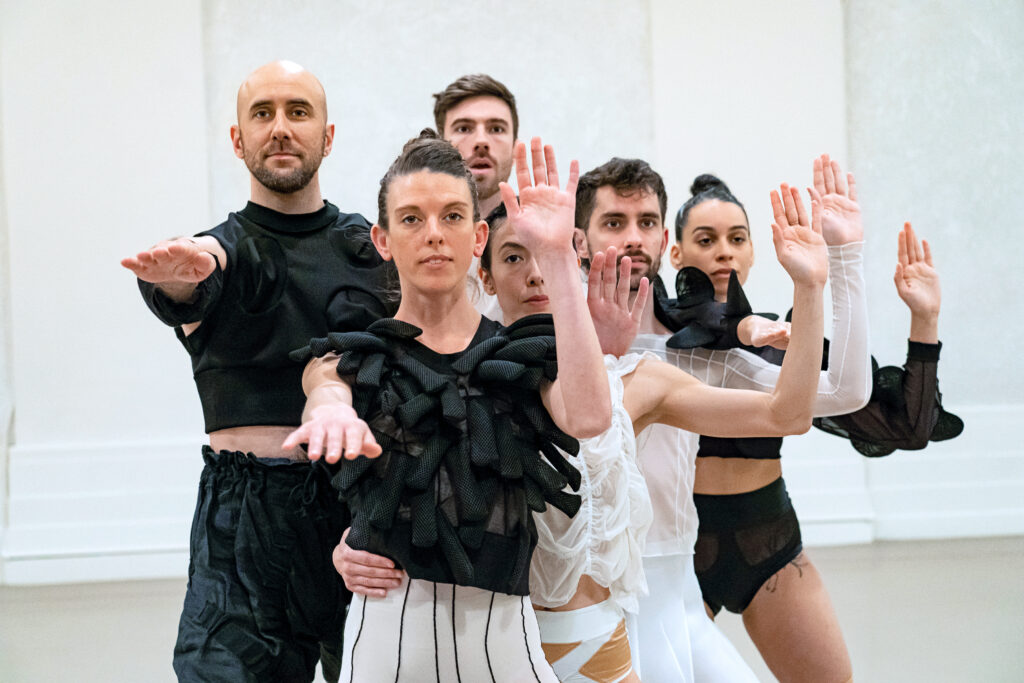Judith Sánchez Ruíz on Being the First Person to Receive a Choreographic Commission from the Trisha Brown Dance Company
When Trisha Brown Dance Company associate artistic director Carolyn Lucas invited Judith Sánchez Ruíz to make a new work for the company, it was a historic first: Since its founding in 1970, it has only ever premiered works by Trisha Brown. Sánchez Ruíz was a standout dancer with the company from 2006 to 2009. She started her own troupe, JSR, in 2010 before going to Berlin to dance with Sasha Waltz & Guests. After three years, she left that group but stayed in Berlin to focus on her own choreography and teaching. Her commission, Let’s talk about bleeding, premieres May 2–7 at The Joyce Theater in New York City.
What did you take away from dancing with Trisha Brown?
It created a revolution in my system. My body was exploding with information. What’s organic? What’s grounded? Being multidirectional, initiating with different parts of the body and partnering without effort—“Oh, I’m in the air, how did I get there?” The breathing, and the idea we come to unison without looking at each other. All of that was so new.
When Carolyn Lucas called you, what did she say about the commission?
Carolyn asked, “Will you build a piece about legacy?” But if I stay with legacy, I cannot find my voice. At the same time, I am so grateful to Trisha. When I entered the company, I was 33 with a 2-year-old baby at home. I learned so much from her.
What did you have in mind when you titled the piece Let’s talk about bleeding?
I did the title in a dramatic moment. I have been on my own since 2014, when I left Sasha. I was a little bit bleeding. The 11 years in Berlin have been very hard. I built my career on my own, step by step, without any help, without any grant. Doing the opera in Münster, I was fighting for contemporary dance. It was so much fun, but they don’t understand dance. We need to respect the role of dance. That’s, for me, bleeding. We are still bleeding, as a community, as an individual, as a female.

You have an arresting image in the beginning of two men with bent elbows curving around each other on the floor.
I call that “domino elbows.” Many images come from my diary. I draw the image and say, “Could you do something?” Or sometimes I say, “I have it so clear.” One of my main vocabularies is “100 legs.” It’s like you create initiations in two parts of the body, and at the same time multi-directionality. And then you make long sentences and short sentences.
There’s a striking contrast between Cecily Campbell in a precarious relevé and Jennifer Payán on her belly, reaching toward Cecily’s feet.
Jen is the soil, trying to find the space to grow; Cecily, this relevé lady—we are always so proper, very easy femininity, trying to follow a path but it’s impossible because you are in relevé. Coming from Cuba, I feel I’m always on relevé, always fragile. No matter what, there’s a whole family in Cuba I have to provide for. My mother and sister’s family are there, with two small kids, a few cousins and two half-brothers.
Do you think you’ll stay in Germany?
I’m hardly there. I sleep there, I pay taxes there. But I go everywhere. I’ve been in Brussels, I just came back from Hong Kong. I’ll be going to Senegal. My son is in Florence studying fashion and painting—very close to home, very experimental. In the future we’re going to collaborate together.
Do you feel a sense of responsibility to the future of Trisha’s company?
I have a spiritual connection. I need to share this precious diamond information of her work. And this piece is important for the survival of the company. It’s about honoring Trisha’s work, which was some of the most important contemporary dance ever, but also about saying what I want to say.




